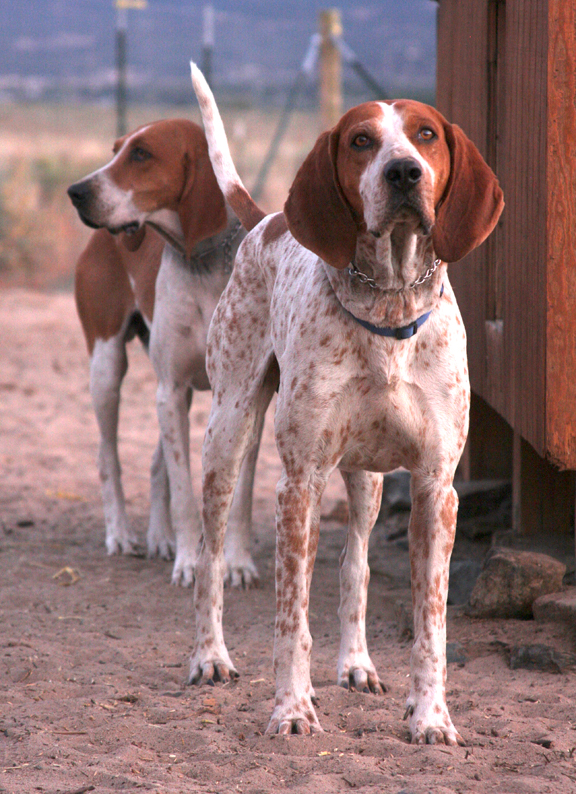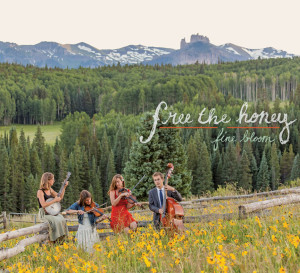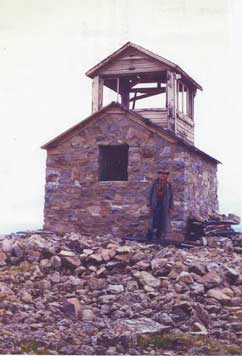by Elliot Jackson

“Foxhunting provides those fleeting moments of total abandonment – of wind-in-your-hair, bugs-in-your-teeth kind of living. At its best, it is totally out of control. Hounds are screaming, hooves are thundering, the horn is blasting as you race and jump across country to die for, often in weather not fit for man or beast. It is the original extreme sport and the sport of country people from every generation since the beginning of time.” (Excerpt from the book Whipper-in, by Dennis J. Foster, quoted in the MFHA Foundation’s “Introduction to Foxhunting.”)
When the name of George Washington is invoked, most Americans have a variety of stock tropes they can call to mind, often involuntarily, to describe him: General, President, Father of Our Country. “Proud Owner of Sweet Lips,” however, would probably not be first among them. And yet, according to author Stanley Coren, if not for the fact that one of Washington’s proudest achievements was the development of the “Virginia Foxhound” – of whom “Sweet Lips” was apparently his favorite – none of the other soubriquets above might have applied to him.
According to an article Coren published in Psychology Today in 2009, Washington owed his advancement to Commander-in-Chief of the Continental Army to, among other things, his foxhound Sweet Lips. She was at his side when he came to Philadelphia as a representative to the Continental Congress. When Elizabeth Powel, the wife of the mayor of Philadelphia, encountered Washington and Sweet Lips on the street, she was apparently so struck by both man and hound that she invited Washington to dinner to meet her husband, Samuel Powel. Washington – whose passion for foxhunting was such that he rode out to hounds two or three times a week, if he could – was invited by the mayor to join the Gloucester Hunt Club in New Jersey to indulge this passion while he was in Philadelphia. There he met the movers and shakers of colonial society who ultimately floated his name as a candidate for supreme commander of the Continental Army.
What I find so fascinating about this anecdote – other than the fact that Washington, not especially noted in history for a sense of whimsy, named his favorite hound “Sweet Lips”! – is the link it demonstrates between one of the key figures of the American Revolution and an institution that seems so peculiarly British – namely, foxhunting. It serves as a reminder that the leaders of the Revolution considered themselves, essentially, English gentlemen.
Hunting on horseback is a worldwide phenomenon, with roots in the ancient world; but the aristocracy of the 14th and 15th centuries would have been hunting stag, not foxes, on horseback. Foxes, as “vermin,” would have been hunted with dogs, but on foot, and principally by commoners, not by landed gentry. Foxhunting in the form we think of it today – with its elaborate rules of etiquette and dress that give us the iconic pageantry of scarlet-coated gentlemen and ladies on horseback, dashing after a pack of hounds in full cry – developed largely through the efforts of one man, Hugo Meynell. He became the Master (keeper of hounds and kennels) of the Quorn Hunt in Leicestershire in 1753, and remained Master for almost 50 years, becoming known as the “Primate of the Science.”
The afore mentioned Gloucester Hunt Club, founded in 1766, was the first hunt club founded in North America, but it was by no means the last. Foxhunting, in its classical form, but with a few Western twists, is even alive and well in Central Colorado. Headwaters Hounds, which had its first hunt season in 2014, is based in Salida, and hunts over public lands in the Central Mountain region. Dr. Alison Brown, the Master and Huntsman of Headwaters Hounds, was gracious enough to introduce me to this thrilling sport and fill me in on some of its particulars.
First of all, the quarry: even though the sport is commonly referred to as “foxhunting,” the quarry in the western United States is usually coyotes or hares, sometimes bobcats. Foxes, of course, are also prevalent in the western United States, but coyotes are the most common quarry.
Next, the horses: “hunter” is a catch-all term for any horse (usually, though not always, a Thoroughbred, or a Thoroughbred crossed with another breed, such as a draft horse) that can negotiate the challenges of cross-country riding, including the ability to jump obstacles such as ditches or fences. Not that a hunter needs an exalted pedigree: what is most important is stamina, willingness and good behavior around other horses and hounds. Dr. Brown emphasizes that any good, steady trail horse with these qualities has the ability to be a hunter.
The hounds: American Foxhounds, a breed descended from Washington’s Virginia Hounds, “cousins” to English Foxhounds, are specially bred to hunt foxes, coyotes and hares by scent. Foxhounds are trained not to “run riot” – that is, indiscriminately chase other quarry or livestock – but, rather, to focus on the appropriate quarry and work together as a pack.
[InContentAdTwo]
The season: traditionally, foxhunting is a winter/spring sport – the season usually starts anywhere from October to December and runs through March. “Cubbing” season can start as early as September. Cubbing is, as Dr. Brown explains, “a chance for young hounds to get used to chasing and for young quarry to get used to being chased.” It is also an ideal time for novice hunters to join in, as the hunts are usually shorter and less strenuous than during the regular season.
The hunt: The hunt is either “live” (chasing live quarry) or “drag” (a bag dipped in scent is “dragged” over the field, which the hounds will pursue as though it were live quarry). Hounds respond to the horn and calls of the Huntsman, who is responsible for their training, will know them all by name, and will direct them during the hunt. That famous cry of “Tally Ho,” which is almost all that most of us know of the sport, is the signal (or “halloo”) called by the Master when the quarry is sighted, and the chase is on. Essentially, once the quarry has been scented and the hounds “give tongue” (the bay preparatory to giving chase), the hunt is on until the hounds either catch up to the quarry or the quarry escapes. A typical hunt lasts anywhere from two to six hours, and most often, though not always, results in the wily coyote finally giving the hounds the slip, or “going to earth.”
The legend: There is a huge, rich vocabulary of lore and etiquette attached to the sport of foxhunting. The Masters of Foxhunting Association (MFHA) is a great place to start to learn about the sport: their Introductory Guide to Foxhunting is available online (http://www.mfha.org/docs/guidebooks/introtofoxhunting2013.pdf).
Headwaters Hounds is actively seeking participants for the 2015 hunt season. If a day out on horseback in an alpine meadow, watching and listening and chasing along to a pack of hounds at the work they love best, sounds like a thrilling experience to you … well, take it from my humble self, it is. If you are an experienced rider in the Central Colorado area, with or without your own horse, and want to give the sport a try, you can contact Headwaters Hounds via their website at www.headwatershounds.com. If you are not a rider but are still intrigued, there are possibilities for viewing the hunts on foot. There are also social events attached to the hunt season, so if you find yourself attached to someone suddenly enamored of the sport, don’t despair – you can still participate!
And if you are out on a hike this autumn or winter and suddenly encounter a pack of foxhounds and hunters, you are not (necessarily) hallucinating – you will have caught Headwaters Hounds out in the field!
Elliot Jackson lives (and hunts) in Central Colorado.




Well done and very accurate.
Dennis Foster